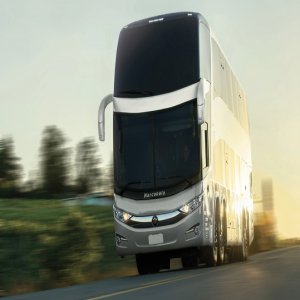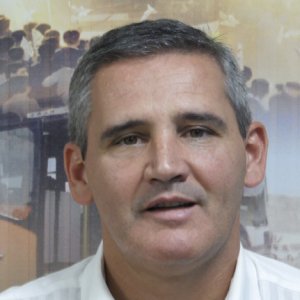Setting Safety and Sustainability Standards for School Buses

STORY INLINE POST
Q: What defines LIPU’s growth strategy?
A: Given that Mexico City is a stable market, we are focusing on important business opportunities in other states. We are also targeting growing sectors such as the automotive industry, especially in response to the opening of new plants in the country. We have a strong social responsibility focus and we like promoting national brands. As our main supplier, Dina is working with Cummins and MAN to develop environmental projects. Given that diesel prices have duplicated since 2008, currently making up 30% of our operational costs, we are planning to buy Euro V compliant buses in 2015 in order to meet stricter EPA standards.
Ten years ago, when SEDEMA (Ministry of Environment) issued its first analyses revealing the correlation between the use of schools buses and lower pollution levels, we realized the benefit a project like this could bring to our society. Many studies supported the initiative to make school bus transportation mandatory, showing a significant improvement in air quality by replacing 35 cars with a single bus. School buses represent an extra cost, but incentives to make this service 100% deductible would make it an attractive alternative. In terms of fuel, it is relatively easy to get ultra- low-sulfur diesel (ULSD) in Mexico City, where our operations are located. We have agreements with different gas stations, and a direct PEMEX line for our base. The availability of ULSD has not restricted our operations; unfortunately, the same cannot be said for natural gas. There are only four natural gas stations in the city. Nevertheless, we are running some tests with these types of units, and we are hopeful that natural gas availability will improve following the Energy Reform.
Q: Apart from diesel, what are your main operational costs, and what strategies do you have to lower them?
A: Our second most important costs are salaries, while maintenance takes the third spot. Salaries are mostly a fixed cost, but we have always tried to establish sales contracts with extensive post-sales services to lower maintenance costs. These are divided in five categories: preventive, minor corrective, major corrective, image, and tires. Major corrective costs represent the largest expense, while tires account for about 25% of the total costs. Therefore, we have implemented controls to verify tires regularly, avoiding theft, and prevent practices that reduce the tire’s lifespan. We have a renovation strategy that doubles the lifetime of our tires when implemented properly. Fuel theft represents a huge cost, too. We have a whole division dedicated to fuel control, comprised of gas station attendants, auditors, and an information capture and analysis team that offers statistics and historical data regarding the performance of every unit. In terms of logistics, we often check that our clients’ routes are efficient. Also, we have developed a program to rent buses to other companies while they are not being used by schools. This service is cheaper since it adapts to our schedule, and it enhances our efficiency and profitability.
Q: What new technologies are you incorporating to provide better services?
A: We made a significant investment when GPS first arose ten years ago, and we have tried to keep up with state- of-the-art technology ever since. Nowadays, our software allows us to track buses and stop the engine remotely, to measure traffic, estimate travel timeframes, and track unit efficiency and route fulfillment. Even though these services might be expensive, they have helped us to minimize costs and enabled us to extend the lifecycle of our buses by ten years. Other accessories such as security cameras, entry control systems, and Wi-Fi are occasionally demanded by our clients, but we do not want to make our service more expensive by adding these features permanently. Of course, we do make them available at the request of our clients.
Q: What distinguishes LIPU from its competitors?
A: Safety has always been our biggest advantage. Rather than having a back door, our buses have a left side door that allows children to descend safely. In case of an emergency this allows us to pass students from one bus to another without having to get them off the bus. Also, we are extremely careful and selective with the people we hire. We do background checks, socioeconomic studies, and we regularly test our drivers with anti-doping and medical check-ups. Regarding training, every six months the driver goes through first-aid and firefighting courses, instruction on defensive and preventing driving, emergency routines in case of social unrest or natural disasters, and a protocol in case of car-tailing or kidnapping attempts.























